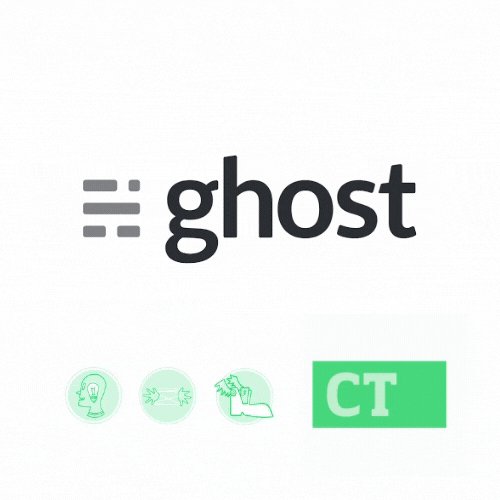This essay was originally sent as an email newsletter on April 15, 2021 with the subject line "CT No. 77: How to choose a CMS" and a review of best-for-small-business website builder Squarespace.
So you want to build a website, app, intranet or other digital content product? You're gonna need a content management system (CMS).
In other phases of my career, CMS has stood for Chicago Manual of Style or the Center for Medicare Services. Here on The Content Technologist CMS stands for one thing only: the content management system that organizes and structures your digital presence, from entry to eventual migration.
Why do you need a CMS in the first place?
Not every website requires a CMS. If your site is under 10 pages and does not need to expand or quickly change information, you can build a static website, wherein your content is coded differently into each page. There are tons of static website builders and landing page software, as well as creative web developers, to help you build that static site.
But if you're building a website where you want to change or add information without the help of a developer, a CMS is necessary. The content management system, or your website's "back end," adds crucial structure and metadata to your content dynamically. With a CMS, it's far easier for algorithms, search engines, APIs, etc., to decipher and organize your content.
Your CMS is also why creating a website can be described as "too difficult," an opinion that elicits a massive eyeroll from content professionals (or maybe just me). Selecting and structuring a CMS requires time and care, the same type of time and care that should be put into selecting a printer for your magazine, hiring a crew for your commercial, selecting camera equipment for your social livestream, or producing and optimizing a podcast.
Professional content—no matter the medium—means considerate and intentional publishing operations. For web publishers, your content management system will support, maintain, and structure that content for your readers, as well as support monetization and data acquisition for your business.
So how do you intentionally select a CMS that supports your current and future content? Whether you're redesigning an existing website (most likely) or planning a new digital content project (lucky you), start here:
1. How much content do you have?
Volume and frequency are the biggest determiners for CMS selection. If you have an existing website, you can use this tool to determine how many pages you have.
![Levar Burton and two women dance excitedly in a library from Reading Rainbow. [gif]](https://www.content-technologist.com/content/images/2021/04/library-dance.gif)
If the your web content library is:
- <50 pages: Small websites have more free or inexpensive CMS options and require less planning. You still need to plan, but it's fairly easy to migrate content.
- 50-500 pages: Most corporate marketing and early publisher websites fall in this range. Extremely low-cost scrappy options are not a wise choice, and if you're going low-cost, expect to spend a LOT of time preparing and managing your content.
- 500+ content pages: Look at CMS options specifically designed for content publishers. Consider a headless solution.
- 500+ product pages: Looks like you need an ecommerce-focused CMS. This blog post is not going in-depth on the types of choices here, but Shopify, Magento, BigCommerce and Prestashop are all common options.
Frequency and future content planning factor into CMS selection as well. It's easy to start with a blank set of content fields and all the promise in the world, but if you're publishing one new piece of content weekly, that's 50 more pages by the end of next year.
If you don't want to redesign your site again in two to three years, answer the above question as if you've already published that three years' worth of content.
2. How do you want audiences to access and distribute your content?
Are you planning on sending an email newsletter in addition to a website? Is your social strategy Pinterest- or Twitter-heavy? Are you producing heavily in gated lead magnets? Incorporating interactive elements to your content? Getting fancy-schmancy with animations? Need to incorporate programmatic ad servers or pop-ups without slowing down your page speed? You can find CMS that serve and incorporate all these additional distribution systems—but publishers consider these needs in the selection process.
If you haven't yet, read my previous post on content business models for broadcast, subscription, membership, and community. Your business model should inform your content management system—and not the other way around. Many content management systems offer membership, community or subscription features or integrations.
For those planning on taking over the world with their content distributed across media, especially apps and web, a headless content management system with API support is worth investigating. Contentful, Craft CMS, Sanity.io, Magnolia, the terribly named Kentico Kontent and headless WordPress are common solutions.
You'll also want to ensure collecting customer data securely is top-of-mind as well. (Remember: if you want to succeed at content monetization, secure and responsible data collection is a must.)
![Newsies are gathered holding newspapers. Jack says, "Headlines don't sell papes. Newsies sell papes." [gif]](https://www.content-technologist.com/content/images/2021/04/newsies.gif)
Make a list of your needs and your nice-to-haves. Know how your content will be distributed. It will narrow your options significantly.
3. What kind of development and publishing support resources do you have?
I've worked with many kinds of digital publishers and clients, and your existing staff and organization should inform the tools you choose.
- If you have access to web developers but not additional content managers, you'll want a CMS that supports more automations, including automated metadata or an easy-to-use digital asset manager to store media embeds. I recommend Craft CMS or Sanity.io if your dev team is up for it.
- If your organization leans heavily on graphic design and visuals, you'll want a CMS that enables designers and front-end developers to be more creative while still maintaining organized content on the back end. Webflow is my favorite design-forward CMS for complex content. Some of the WordPress pagebuilders that support dynamic content are suitable. No matter what, you need a content delivery network (CDN), particularly if you're embedding lots of large, beautiful images, which are the number one roadblock to a fast site speed.
- If you're drowning in content creators and editors but have limited development staff, you'll want to invest in a CMS with multiple permissions levels for content entry, as well as documentation for non-devs to be able to use the system. For organizations with this issue, I also recommend choosing a common CMS for which you can find significant development support from a variety of vendors: WordPress, Drupal, Joomla, SiteCore, and Kentico have all been popular in my world, but different geographies and professional circles have other preferences. The idea: if your developer gets hit by a bus or changes careers, then you can find support elsewhere. If you're publishing frequent content, consider a headless CMS that provides back-end content management support for you, like Contentful or Magnolia.
- If your organization is primarily driven by your sales team and, thus, your CRM or marketing funnel software, your content management system options will likely include the proprietary CMS for your CRM. After you've torn your hair out from a case of TMA (Too Many Acronyms), explore whether Hubspot, Salesforce or other CRM-native content management systems can provide adequate content support for all your big publishing plans. If possible, select a CMS that can incorporate your sales and marketing software (almost all of them can, usually with the help of Google Analytics or another platform), and not the other way around. (Hubspot, Salesforce, Adobe Experience Manager, and many enterprise CMS fall into my "try something else if you can help it" bucket. If you're stuck with Sharepoint, now or ever: I'm sorry.)
4. What kind of SEO support does your CMS need?
SEO support used to be an add-on, but thankfully more CMS are incorporating organic search optimization more easily, either embedded or through common plugins.
In addition to customizable page titles and meta descriptions, which are table stakes for optimization, look for the following SEO features in your CMS:
- Structured data/schema markup for all your chosen content types
- Redirect/canonical management
- A reputation for fast page speed
Structured data is the whole reason you have a content management system in the first place: You're entering content into fields that are then marked up with specific identifiers, converting your creativity into a superpowered spreadsheet that can search engines then read and circulate. Schema markup support/plugins append that content data with identifiers—bylines, events, news content, recipe content, etc.—all of which can produce rich results in search engines and social feeds.
Structured data through schema markup usually supports RSS feeds, which are necessary to be indexed in Google News and other syndication support systems. The markup for RSS and schema are slightly different, but typically if you have schema support, you have appropriate RSS markup as well.
Redirects are necessary for maintaining SEO equity if a page URL is deleted or changed. Redirect managers are especially crucial in website redesigns, since changing URLs can significantly impact organic traffic from SEO if not properly implemented.
And finally: It's crucial for UX, SEO and your sanity that your site loads quickly, without a ton of extra code. Many WYSIWYG page editors in Wordpress (Beaver Builder, Divi, WP Bakery, Elementor), as well as Wix and Squarespace, apply extra code to pages that can hinder loading speeds. If you're not planning on building complex dynamic content, a WYSIWYG builder is fine, but if content distribution is your primary goal, you probably want to consider other options.
Much of loading speed depends on how your site is structured -- which is why you'll probably want to work with an SEO-informed information architect before you design the site. (Hello, this is me, let's work together.) Investing in SEO before your site is built saves thousands down the road.
5. What do you/your teammates like about the CMS you have used before?
Whether it's used daily, weekly or monthly, you should like something about the experience about using your CMS. The authorship, or back end, experience is often the last that software developers consider in a content management system. One of the reasons simple, elegant writing platforms like Medium and Substack rose to popularity was their focus on the writing, rather than the front-end, experience.
Often companies change CMS because they're frustrated with the authorship experience, only to switch to a new CMS that has entirely different, equally frustrating problems. Before you make the switch out of frustration, review what you like about your current system and what you want to avoid in a new one. It's your job to work with the content management system frequently, and if you hate the tool, you're not going to like the task much either.
6. What do you like about your vendor?
Do you prefer an open source solution? Would you like to work with nonprofit companies? Do you want customer service support? Are you seeking managed services, aka all your back-end updates taken care of so you don't have to?
One of my cardinal rules is: Work with vendors you like, who are supportive and don't treat you like a ticket to be filled.

There are many content management systems out there, and none is perfect, so make note of the qualities you want in a software partner. Remember: Your CMS is a library, a stockroom, and a toolshed for your digital space. Choose a structure you're comfortable with.
Need help choosing a content management system or redesigning a website? Let's work together.
Hand-picked related content







